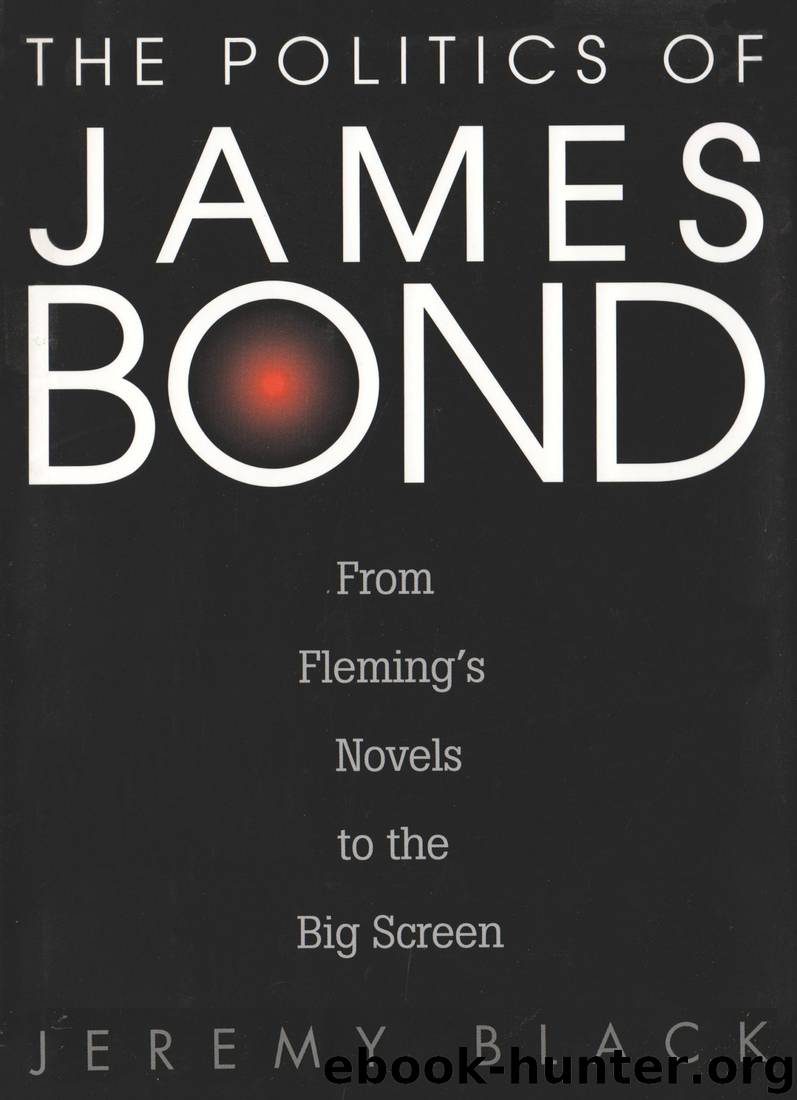The Politics of James Bond by Jeremy Black

Author:Jeremy Black
Language: eng
Format: mobi
Published: 0101-01-01T00:00:00+00:00
7 The Connery Years
Ten will get you one, it's a drink or a dame.
-Felix Leiter on Bond's likely destination, Goldfmger
It won't be the nicotine that kills you Mr. Bond.
-Blofeld to the captured Bond in You Only Live Twice
Sean Connery was not Fleming's choice for Bond. His preference, David Niven, reflected Fleming's view of the character. Niven was a stylish, public-school educated gent, used to playing such roles. No youngster, Niven did not seem a killer, and certainly did not have the disconcerting edge that Connery could offer, as was to be shown when Niven starred as the retired Sir james Bond in the spoof Casino Royale (1967).
The producer, Albert ”Cubby" Broccoli, did not want an actor or character like Niven. Instead, as he later explained, he wanted Bond to have a tougher, less British, persona. Britishness was to be diluted and transformed. Bond was to have a "mid-Atlantic" image, able to appeal to American filmgoers as a man of action without putting them off with jarring British mannerisms. Bond had to be self-contained, not self-satisfied. Indeed, the opening scene in the London casino in Dr. No was of Bond as a tough, certainly far tougher than the upper-class agent sent to summon him to action. Connery's Scottish accent lacked the connotations and social location of English accents, for example the rich near-drawl of Charles Gray's Blofeld in Diamonds Are Forever. However, the Edinburgh-born actor, a former male model and body-builder, born in 1930, who had been gaining major television and film roles from 1957, was not so far from an image of classic British style as to be implausible.
Connery made the role his own and created the Bond audience for the cinema. Bond's character was well realized by Connery. He revealed the spare, pared-down character of Bond, and the inner bleakness alongside the style. Introduced to the audience at the chemin-de-fer table, Bond speaks through his cigarette, a man in charge of himself and unconcerned by the reactions of others. Connery's Bond was not an automatic smiler.
Connery offered Broccoli what he wanted, a "man of the people," and one for a mass audience. This was a period in which “Angry Young Men" were playing a prominent role in British film characterization. In Dr. No Bond seemed less establishment, certainly less polished, than the aloof Julius No. Bond was also very different from Strangeways, the British agent killed at the outset. Strangeways's accent was more refined and his bearing more military. Both Bond and Dr. No are intruders on the colonial ease of Jamaica. Bond saves a society that has gone soft and cannot appreciate the threat posed by Dr. No, although this counterpointing is far less pronounced than in the novel, in large part because the unsympathetic portrayal of the acting governor is discarded. Instead, the counterpointing is provided by Bond as the man of action.
The Bond-Connery association was developed in From Russia With Love (1963), a film with the same director, Terence Young, again using a Richard Maibaum screenplay.
Download
This site does not store any files on its server. We only index and link to content provided by other sites. Please contact the content providers to delete copyright contents if any and email us, we'll remove relevant links or contents immediately.
Still Me by Jojo Moyes(11153)
On the Yard (New York Review Books Classics) by Braly Malcolm(5488)
A Year in the Merde by Stephen Clarke(5297)
Eleanor Oliphant Is Completely Fine by Gail Honeyman(5206)
The Bookshop by Penelope Fitzgerald(3762)
How Music Works by David Byrne(3157)
Surprise Me by Kinsella Sophie(3066)
Pharaoh by Wilbur Smith(2950)
Why I Write by George Orwell(2863)
A Column of Fire by Ken Follett(2551)
The Beach by Alex Garland(2512)
Churchill by Paul Johnson(2493)
The Songlines by Bruce Chatwin(2484)
Aubrey–Maturin 02 - [1803-04] - Post Captain by Patrick O'Brian(2272)
Heartless by Mary Balogh(2215)
Elizabeth by Philippa Jones(2138)
Hitler by Ian Kershaw(2136)
Harry Potter and the Cursed Child by J. K. Rowling & John Tiffany & Jack Thorne(2021)
Life of Elizabeth I by Alison Weir(2011)
